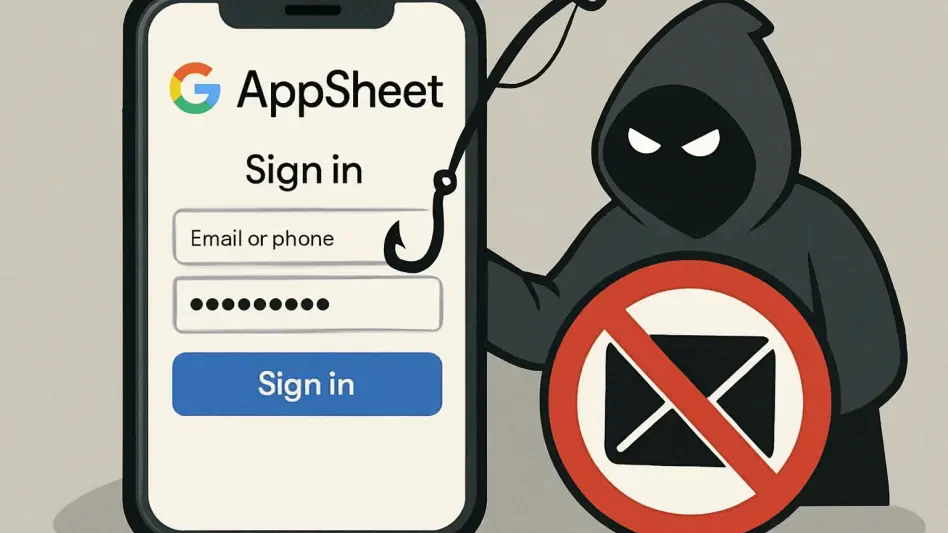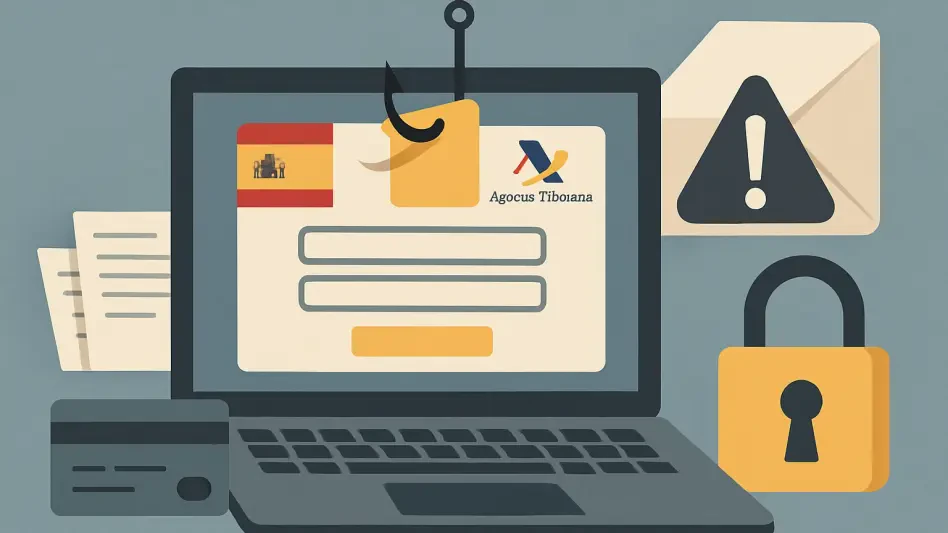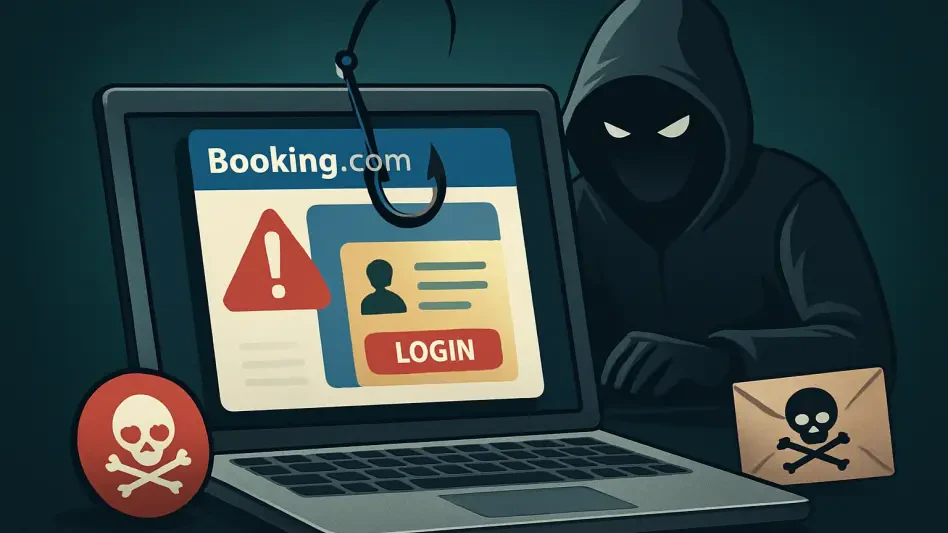Imagine opening an email from a trusted platform, only to find a startling notice about a trademark enforcement issue that demands immediate action, urging you to click a link to resolve it. This scenario is not just a hypothetical situation but a real and growing threat targeting Google Workspace users through Google AppSheet, a reputable no-code app development tool. This review delves into the intricate details of this phishing scam, examining how it exploits trust in a legitimate service to deceive users, bypass security measures, and pose significant risks to businesses. By dissecting its mechanics and impact, this analysis aims to shed light on the vulnerabilities within trusted platforms and the urgent need for evolved cybersecurity strategies.
Understanding the Exploitation of Google AppSheet
Google AppSheet, known for empowering users to create custom applications without coding expertise, has become an unexpected vector for a sophisticated phishing campaign. Cybercriminals are leveraging the platform’s credibility to send deceptive emails to Google Workspace users, tricking them into revealing sensitive information like login credentials. These attacks exploit the inherent trust users place in familiar tools, making this scam a critical concern in the digital security landscape.
The relevance of this issue extends beyond a single platform, reflecting a broader shift in cybercrime tactics. Attackers are increasingly targeting reputable services to sidestep traditional email filters, which often focus on identifying suspicious senders rather than analyzing message content. This trend highlights a pressing need to rethink how security systems evaluate threats in an era where legitimacy can be weaponized.
Technical Analysis of the Phishing Mechanism
Authenticity of Email Delivery
At the core of this phishing scam lies its alarming technical sophistication, as emails are sent from a legitimate address, [email protected], using Google’s own mail servers. This setup allows the messages to pass standard authentication checks like SPF, DKIM, and DMARC, which are designed to verify a sender’s identity. As a result, email filters and security protocols often fail to flag these communications as malicious, creating a false sense of safety for recipients.
This technical authenticity poses a significant challenge for conventional security tools that rely heavily on verifying the origin of an email. When a message appears to come from a trusted source, it slips through the cracks of many protective systems, leaving users vulnerable to deception. The seamless integration of these emails into routine correspondence amplifies their potential to cause harm.
Deceptive Messaging and User Manipulation
Beyond technical legitimacy, the scam’s success hinges on carefully crafted content designed to provoke urgency and fear. Subject lines such as “trademark enforcement notice” are used to alarm recipients, prompting them to act without thorough scrutiny. Such psychological tactics exploit human instincts to address perceived legal threats, making users more likely to overlook warning signs.
The emails often include URL shorteners that redirect to fraudulent login pages, meticulously designed to mimic legitimate sites. These pages harvest credentials and other sensitive data, capitalizing on the initial trust established by the email’s apparent authenticity. It is this manipulation of content, rather than the sender’s identity, that drives the scam’s effectiveness, revealing a gap in security measures that prioritize origin over intent.
Emerging Trends and Scale of the Threat
Recent data underscores the escalating prevalence of AppSheet-related phishing attacks, with a noticeable surge in incidents reported since early this year. On a particularly alarming day, April 20th, nearly 11% of global phishing emails were traced back to this platform, illustrating the scale and audacity of the campaign. Such figures emphasize how rapidly this threat has grown, demanding immediate attention from cybersecurity professionals.
This spike aligns with a broader pattern in cybercrime, where attackers favor trusted platforms to cloak their malicious activities. By embedding their schemes within familiar ecosystems, they evade detection by systems conditioned to flag anomalies based on sender reputation. This shift challenges the foundation of email security, pushing for solutions that address the nuances of modern phishing tactics.
The implications of this trend are far-reaching, as reliance on established brands for credibility allows cybercriminals to blend seamlessly into everyday digital interactions. As these attacks become more frequent, they expose the limitations of existing defenses, urging a reevaluation of how threats are identified and mitigated in a landscape of evolving deception.
Impact on Industries and Consequences
The primary targets of this phishing scam are Google Workspace users, particularly those in corporate settings who utilize AppSheet for app development and workflow management. Businesses across various sectors, including legal, technology, and administrative fields, are especially vulnerable due to the plausibility of receiving trademark notices or similar urgent communications. This targeted approach heightens the risk of successful breaches within environments that depend on seamless digital tools.
The potential fallout from these attacks is severe, ranging from unauthorized access to critical systems to substantial financial losses stemming from stolen data. A single compromised account can serve as a gateway to broader network infiltration, disrupting operations and eroding trust in digital platforms. Such consequences underscore the urgency of addressing this threat before it inflicts further damage on unsuspecting organizations.
Moreover, the ripple effects extend to reputational harm, as companies grapple with the aftermath of data breaches and the loss of client confidence. Industries that handle sensitive information face heightened scrutiny, as any lapse in security can have cascading effects on their credibility. Protecting against these risks requires not only technical safeguards but also a cultural shift toward vigilance within affected sectors.
Challenges in Countering the Scam
One of the most formidable obstacles in combating this phishing campaign is the technical legitimacy of the emails, which originate from a trusted source and comply with authentication standards. This compliance renders many traditional security measures ineffective, as they are ill-equipped to flag messages that appear valid on a surface level. The reliance on sender verification alone leaves a critical blind spot in defense mechanisms.
Additionally, the sophistication of content manipulation complicates detection efforts, as the malicious intent is embedded in the message rather than its delivery method. Current systems often lack the capability to analyze contextual cues or behavioral patterns that might indicate a scam, allowing these emails to reach inboxes unchallenged. This gap highlights the limitations of static security protocols in a dynamic threat environment.
Addressing these challenges necessitates a dual focus on advanced technology and user education, alongside greater responsibility from platform providers to curb misuse. While immediate solutions remain elusive, the ongoing struggle to adapt to such threats reveals a pressing need for innovation in how digital communications are secured. Without a proactive stance, the gap between attacker ingenuity and defensive capabilities will continue to widen.
Future Considerations and Protective Strategies
Looking ahead, the trajectory of phishing scams exploiting trusted platforms like AppSheet suggests a persistent and evolving challenge for cybersecurity. As attackers refine their methods to exploit user trust, the development of content-aware security systems becomes imperative. These systems must go beyond sender authentication to evaluate the appropriateness and intent behind each message, adapting to the subtleties of deception.
Equally critical is the role of user training in building a first line of defense against such threats. Educating individuals to recognize phishing indicators, such as suspicious URLs or unexpected urgent requests, can significantly reduce the likelihood of successful attacks. Empowering users with knowledge complements technological solutions, creating a more resilient barrier against manipulation.
Furthermore, collaboration between platform providers, security experts, and organizations will be essential in curbing the misuse of legitimate services. Initiatives to monitor and restrict unauthorized activities within trusted ecosystems can help mitigate risks before they escalate. A combined approach of innovation and awareness offers the most promising path toward safeguarding digital environments from these sophisticated scams.
Final Reflections on the Threat Landscape
Reflecting on this detailed examination, it becomes evident that the phishing scam exploiting Google AppSheet has leveraged technical authenticity and cunning content to undermine trust in a widely used platform. The scale of the threat, marked by a significant spike in attacks throughout the year, has exposed critical weaknesses in traditional email security measures. This campaign has not only targeted vulnerable industries but also highlighted the broader shift in cybercrime tactics toward exploiting reputable services.
Moving forward, actionable steps emerge as a priority to counter such evolving threats. Organizations need to invest in next-generation security tools capable of analyzing message context, while simultaneously fostering a culture of skepticism among users regarding unsolicited communications. Platform providers, too, must take accountability by implementing stricter controls to prevent abuse, ensuring that trust in their services is not weaponized.
Ultimately, the battle against this phishing scam points to a larger necessity for adaptability in cybersecurity practices. By integrating cutting-edge technology with informed human judgment and fostering industry-wide cooperation, stakeholders can begin to close the gap between attacker strategies and defensive capabilities. These efforts promise a more secure digital future, where trust in essential tools no longer serves as a vulnerability but as a foundation for resilience.








